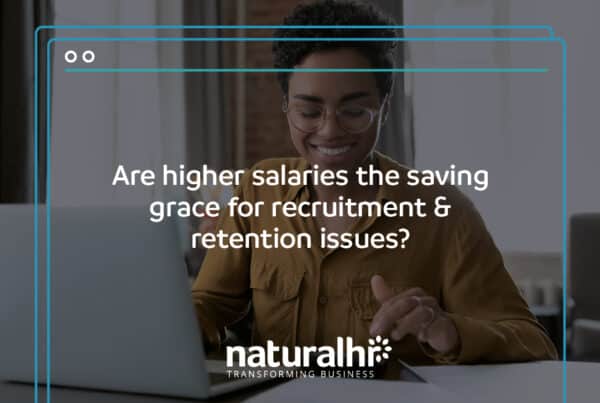
One of the biggest challenges that continue to haunt many organisations, is the prospect of finding a suitable employee with a driven attitude for success and energy that provides value to the business’ culture.
With this in mind, it will come as no surprise to learn that 46% of all new hires are deemed failures by the time they reach their 18-month milestone. Is this starting to ring any bells?
But even this statistic fails to put into words the impact a poor hire can have on an organisation. The Recruitment & Employment Confederation (REC) outlined that more than a third of companies believe hiring mistakes cost their business nothing, yet, a poor hire at mid-manager level with a salary of £42,000 can cost a business more than £132,000 due to the accumulation of costs relating to training and productivity.
At just a glance of those figures, it’s clear to see that this is a problem which can directly affect the survival of any small business, while creating overarching factors that impact employee morale, productivity and turnover for larger organisations.
So, here’re a few pointers to help analyse how much your business is losing during the mind-numbing process of a failed hire.
Hiring activities cost
In this rapidly evolving modern workplace, regardless of your role, you cannot afford to waste countless days and weeks of your time, scouring through your potential talent pool, interviewing multiple candidates and onboarding them into their new role, only for the employee to be sacked or resign several months down the line.
To get a clear snapshot of the expenditure used during the amount of time spent on a failed hire, it’s vital to understand each stakeholder’s involvement in the hiring process. Of course, each business has their own unique team members involved but common examples can be the organisation’s CFO, HR manager, CEO, HR administrator and department manager.
Once you have a clear understanding of who is involved, calculate how many hours per week each person spends on tasks related to the hiring process. For example, the CFO may spend 15 hours of their week identifying the candidates suitable for the role at hand. Take this figure and multiply the number by their hourly working rate.
15 hours per week x £30 per hour = £450
Continue to do this for the remaining employees involved and you’ll be able to generate your total gross figure for hiring activity costs. Now, it’s about finding effective ways to reduce the time spent on the workload and ensure you make smarter hiring decisions moving forward.
With HR Software, you’ll be able to take back control of your time by simply managing every step of the recruitment process from creating job adverts and application forms to managing interviews and analysing hiring costs.
Revenue per employee
Numbers and metrics are often the key determining factors to success in the workplace and when you employ a new hire that hits the ground running, you’ll save massive expenses in onboarding and retention costs, while improving the overall bottom line of the business.
While it’s easier to understand the benefits, a good hire can bring to the business, it’s equally important to compare how much revenue a failed hire generates compared to your organisation’s shining stars.
Begin by digging into your company’s year-end financial report and you’ll be able to uncover the revenue generated by your business that year. Take this number and divide it by the number of employees in your business and you’ll be presented with the total revenue per employee.
£500,000 (revenue) / 60 employees = £8,333
However, you’ve got to take into account that each employee has different skill sets and work rates. According to studies, employees in the top bracket of your talent pool are likely to bring in at least an extra 25% in profit.
This will mean your average hire will bring in £8,333, top tier hires will bring in £10,416.25 and if we reverse the 25% margin, failed hires will only generate £6,249.75. Thus, showcasing the amount of revenue your business could be generating each time, if the recruitment process is right from start to finish.
Recruitment advertising
According to REC’s annual Recruitment Industry Trends, the recruitment industry grew its valuation by 11% to £35.7 billion in 2018, as UK wages accelerated to the highest point since 2008 by 3.3%.
With this knowledge, it’s clear to see organisations and HR departments are increasingly more open to using recruitment agencies to fill their office voids. So, why not begin to track the cost spent on advertisement and recruitment fees to understand the cost of a bad hire within this situation.
If you’ve 15 open positions across the whole organisation, and you’re spending a total of £500 on advertising each month, this will equal to £7,500 per month. However, you’ll also have to consider paying a percentage of the new hire’s salary as a fee if you use an agency. If we take an executive role with an advertised salary of £20,000, a recruitment agency will take 15-20% which is around £4,000.
£7,500 (advertising) + £4,000 (agency fee) = £11,500
This is an excessive amount to be paying for a new hire, especially if they turn out to have a detrimental effect on the company. To reduce these recruitment costs, look no further than cloud technology to transform your processes. Software like Natural HR will enable you to take ownership of each step of the recruitment process from posting the vacancy on your website and popular online job boards, handling the CV, managing the interview, analysing respective costs and begin your onboarding process with your new best-in-class hire.
Workforce productivity
Loss of productivity is a hard element to measure, but this doesn’t mean you should ignore the signs as a poor hire can begin to create a disruptive workforce that affects the company’s culture.
Research conducted by ThriveMap highlighted the significant effect it can have. The survey showcased that employees who felt they fit their role and the culture of their employer rated their productivity 7.2 out of 10. This is compared to the 5.3 out of 10 rating for those employees who felt they were a poor fit for both these factors, which in essence, makes them a failed hire.
To further justify this point, a study by Harris Poll interviewed more than 2,000 HR managers, asking them about the influence a poor hire has on company performance. The results show that workplace productivity considerably suffers with 36% of interviewees stating that performance levels decreased and 31% experienced a negative influence on staff morale. Although, these numbers do fluctuate depending on the location of your business.
Loss of productivity:
- USA: 36%
- Italy: 31
- UK: 23%
- Germany: 25%
- France: 15%
Employee Morale
This non-monetary factor is not talked about enough when a poor hire joins the business. It can create monumental negativity which is especially detrimental in smaller organisations who have a flat hierarchical structure.
By employing a person with a dismal attitude, temperament and skill set it can easily lead to dissatisfaction, underwhelming productivity, absenteeism and even affect the turnover. It’s vital to keep a close eye on the poor hire to prevent them from creating a disconnect between employees, peers, managers and the company.
After all, it’s about creating and maintaining a culture which enables your workforce to thrive. According to WIRED, happy employees are about 12% more likely to be productive, which justifies the reason to consistently review workforce morale.
With Natural HR, your performance management process becomes a breeze; you can build custom performance management forms, set up a schedule and send out timely reminders to both employees and managers to ensure everyone is keeping productive. In addition, you can empower your employees with a self-service function to recognise their colleagues for their hard work and dedication, helping to improve morale across the whole organisation.






